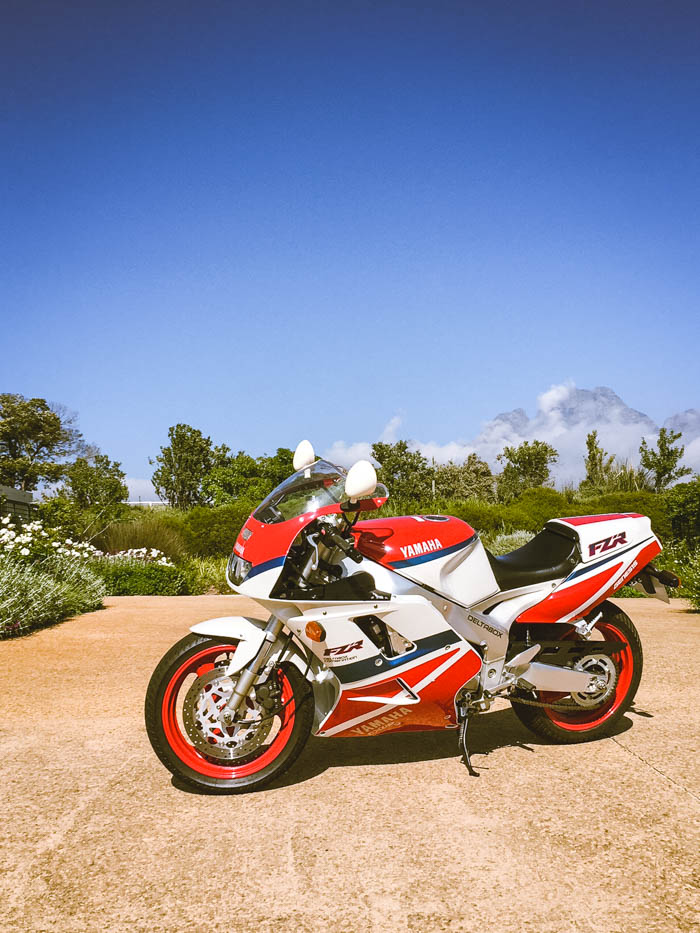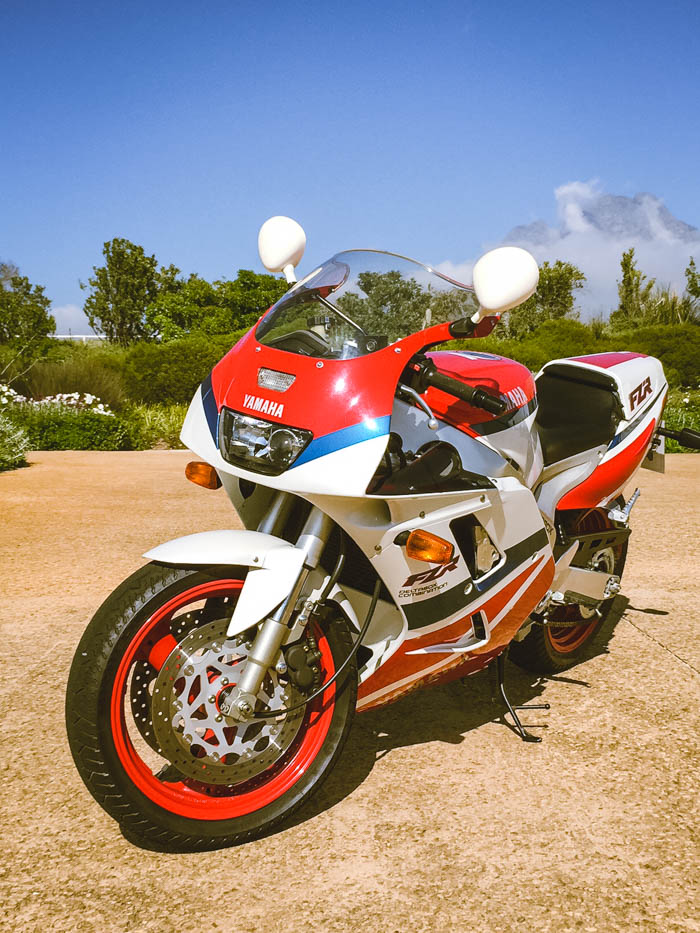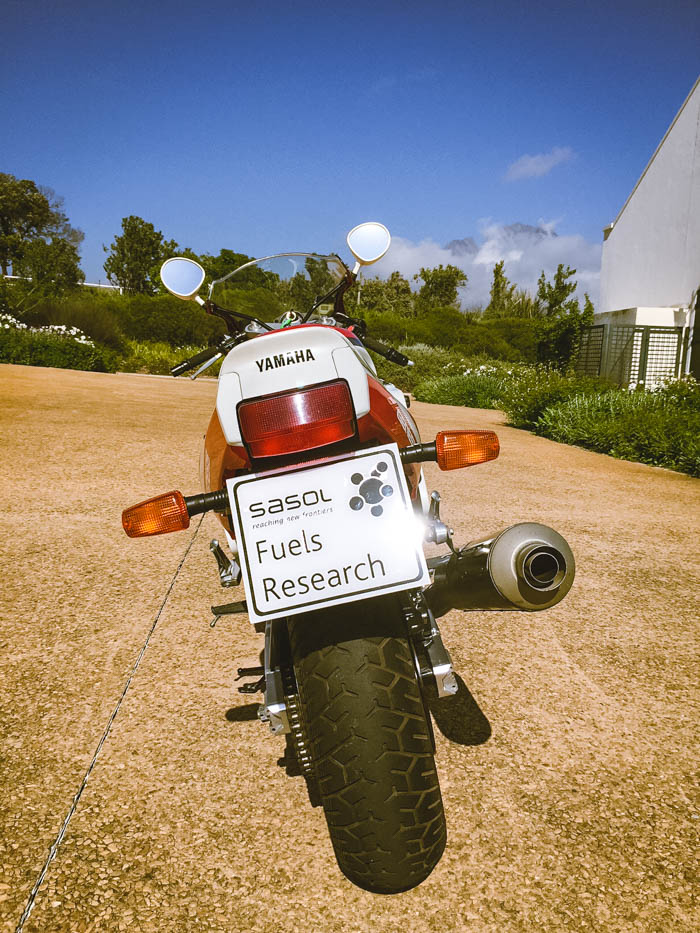
22 Oct On yer bike: Yamaha FZR
FMM curator Wayne Harley is a self-confessed motorcycle enthusiast and this month is back on two wheels with a very special Yamaha.
First introduced in 1987, the Yamaha FZR set the way as a 1 000 cm3 superbike, offering the size and feel of a 750 machine but with the power of a 1000. Its closest rivals at the time were longer, higher and slower. Even the ergonomics of the FZR were a revelation, the rider sitting deeper into the bike with knees no longer up around the tank. Then there was the five-valves-per-cylinder engine that together with Yamaha’s EXUP (Exhaust Ultimate Power Valve) system gave excellent performance. In the late-1980s, 106 kW at 10 000 r/min from the 1003 cm3 inline-four motor was at the sharp end of the superbike market, and it could rev up to 11 500 on its way to a top speed close to 270 km/h, out-running its Japanese counterparts by some 10 km/h. Together with a relatively smooth gearbox and great brakes, all this gave the Yamaha a definitive edge back in the day. The FZR was the class leader in 1992.
“Today it feels rather dated by superbike standards and after a short ride my arms were soon aching as I found it rather heavy. With my riding style, leaning the bike over in a corner, it feels like it nosedives and, in some instances, I even get the feeling the front wheel will let go,” says Wayne. “Also, I would not do any long runs on this bike as I found the seating position uncomfortable and the steering heavy, but then again the FZR is not a touring machine; it was made to go quickly and for many years the FZR 1000 was the yardstick for its competitors.”
OK, so why is this bike in the Franschhoek Motor Museum? Well, the answer is that in 1992 Yamaha was trying its hand at F1 and was building engines for the Jordan. The team had lost its supply of Ford engines due to large debts and Yamaha stepped in with a free supply of the OX99 3,5-litre 72-degree V12 engine for the Jordan 192 race car. And taking over the sponsorship reins was none other than our very own South African fuel and energy company Sasol. Based on this local involvement, I’m sure many South Africans proudly got behind the Jordan team. Sasol and Yamaha worked diligently together to maximise the power available to them both from the engine and the fuel source. But F1 is an expensive game. Their budget was tight and Sasol needed another machine to develop its high quality F1-standard fuel.
The answer lay with the FZR 1000 motorcycle engine, which was ideal for testing fuel consumption, burn rates, temperatures, performance etc, and the test mule is the bike you see here. For many years the FZR was stored at Sasol’s test laboratories until a couple of years ago Gareth Floweday, a senior engineer at the Sasol Energy Technology Group, offered the bike to FMM and we readily accepted this awesome machine. When taking delivery, I was surprised to see that the Yamaha only had 11 km on the odometer, making this beautiful survivor a prime example of an early-’90s superbike while its provenance is another great symbol in SA’s proud motoring heritage.





